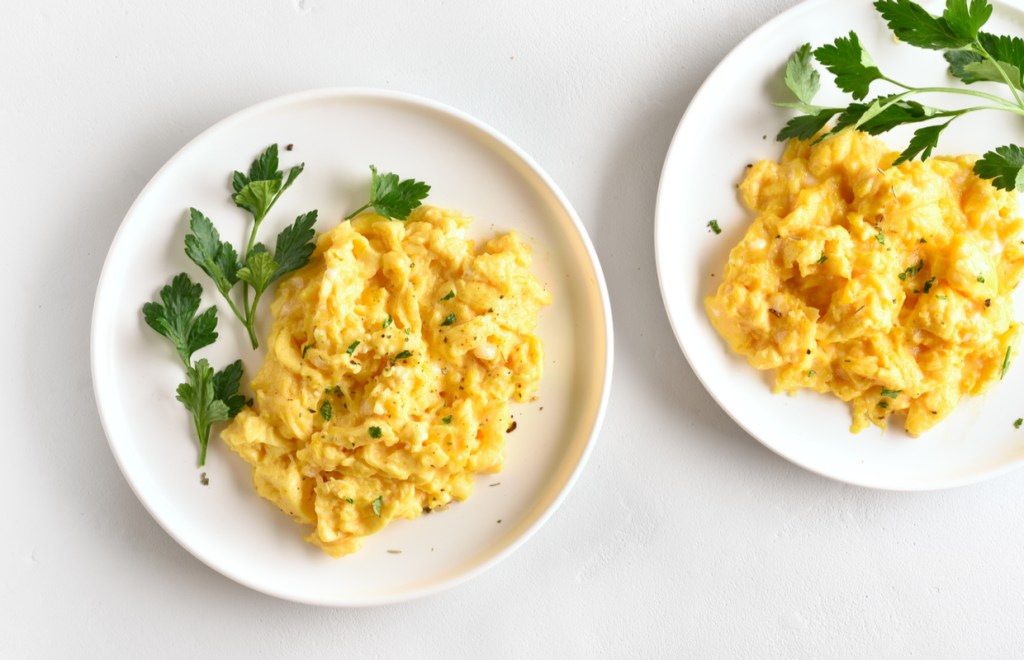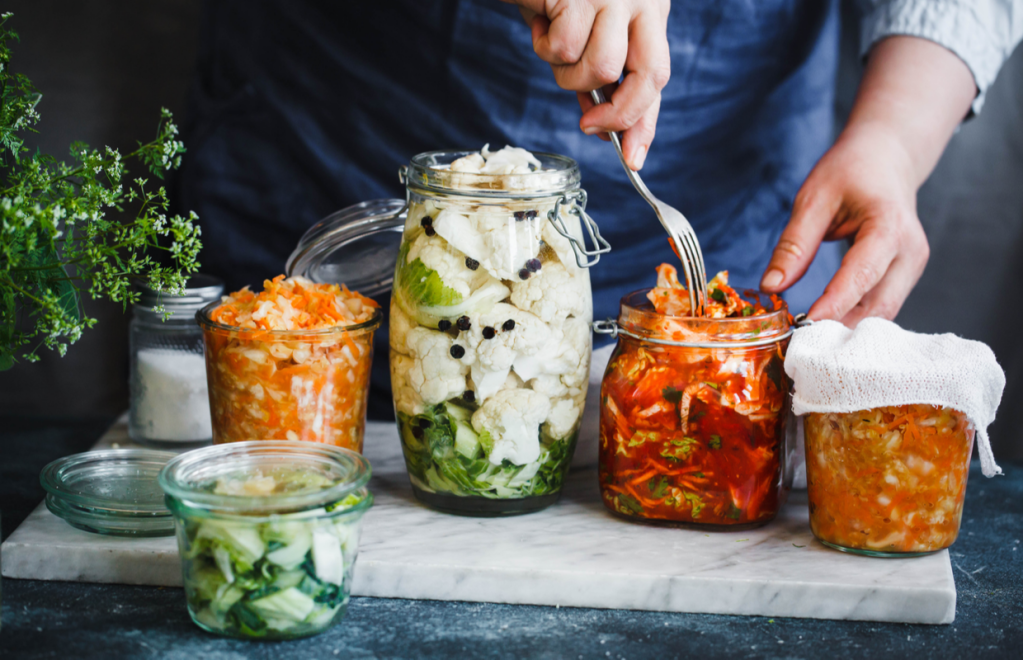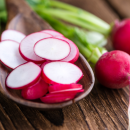Gut health diet: your 4-week meal plan
Learn how to improve your gut health through your diet with this four week plan...

Revamping your diet to help heal your gut can do wonders for the health of your whole body. If you’re wondering what diet you should be following for good gut health, try this four week plan from nutritional therapist Jeannette Hyde…
Whether it’s a new wardrobe or a fresh set of make-up, a revamp can go miles towards helping you feel better on the outside – but what about the inside? Just as your outer self needs an occasional restyle, your hard-working digestive system should also be treated to a well-deserved makeover from time to time.
Deep in the centre of your body, your gut is working away constantly, influencing numerous processes. There are the obvious digestion and waste elimination processes, but ongoing and in-depth scientific studies have also proven that your gut directly influences your weight, skin, immunity and even energy and mood.
The reason it has such influence over your health is because of the complex community of microbes it houses. There are thousands upon thousands of bacterial species in your gut’s microbiome, and the key to a healthy community is maintaining the right balance between good and bad ones.
Detrimental bacteria can build up and upset this equilibrium – a state called dysbiosis – if your diet is lacking in variety, or if you’ve been taking things that kill off bacteria, such as antibiotics. But, your microbiome is very adaptable and within days you can rebalance it with probiotic foods, and feed the good microbes with fibrous, colourful, prebiotic vegetables – which we’ll explore later in the guide.
Which diet is good for gut health?
We expect the importance of having a balanced microbiome will remain a hot topic for the foreseeable future. Jeanette Hyde, author of The Gut Makeover, explains why your diet could be the answer to a happier gut and how to get started…
Are gut health issues becoming more common?
Humans are designed to have an assorted range of bacteria in their intestines, but in Western society, there are three major factors that upset the balance: antibiotics, which are like dropping a nuclear bomb on your microbiome; high alcohol consumption, which can deplete good bacteria and irritate your gut lining too; and a tendency to fill up on nutrient-poor ‘beige’ foods such as bread, pasta, white rice, pastries and sugar, which is an all-round health villain.
When we look at hunter-gatherer communities, such as those in Africa, we see their microbiomes are much more diverse. They have fewer conditions such as autoimmune disorders and some cancers, and are generally more energetic, have healthier hearts and are less susceptible to infections.
They predominantly eat freshly sourced, seasonal food from their locality, and don’t rely on antibiotics or use highly sterile cleaning products, which eradicate the germs that we do actually need, especially as children, to build up healthy immune systems.

How can I tell if my gut health is improving?
It differs from person to person, but the first thing to improve is usually a decrease in heartburn, with less bloating, as well as other gastric symptoms. Then there’s the weight loss. On average, people lose 3-6 kilos by the end of the plan.
They also find their mood improves, skin is brighter and clearer, they have more energy during the day and they sleep better at night. Some people also report improved menstrual or menopausal symptoms.
Are gut health diet plans difficult and restrictive?
Simply set aside four weeks for the first stage and be organised. It’s not restrictive, in fact some people look at the daily menu and say, ‘Are you sure I’m going to lose weight, I’m eating like a king?’ But it’s important to remember that not all calories are created equal.
Take for example chicken, which is protein – the hardest and slowest type of food for your body to break down. You burn up to a third of its calories just by digesting it – something called the thermogenic effect. So instead of counting calories, just enjoy nutrient-rich foods such as those on the plan.
Other than tweaking your diet to include mainly plants and protein, some additional yet simple tweaks will help your gut heal, such as chewing your food properly and leaving plenty of time between eating so you’re not constantly having to break down food all day.
How do I maintain good gut health?
As well as getting your gut and overall health back into balance, the gut health diet plan helps you gain a much better idea of the foods that work for your body, and those that don’t. After the four weeks, you’ve got a blank slate and you can reintroduce some foods, such as different dairy, grains or wheat, one at a time, and monitor how you feel.
If you react – for example, you feel tired, bloated, gassy or ravenous an hour after eating something in particular – you can choose whether to carry on eating it or cut it out forever.
Try to keep up the slow eating, the 12-hour overnight fasts and as little snacking as possible. Give your body regular breaks from alcohol and avoid unnecessary antibiotics. Keep on eating plenty of veg, avoid processed food and eat something fermented every day. Essentially, you can go forward with a realistic healthy eating lifestyle that’s tailored for your individual wellbeing.
Your 4-week gut health diet plan
Welcome to your 4-week gut health diet plan! Weeks one and two focus on repairing the gut, and in three and four you’ll concentrate on reinoculating your gut with good bacteria.

Weeks 1 & 2: Repair your gut
In the first two weeks of this gut health diet plan, you’ll focus on repairing your gut and helping it heal from years of unintentional damage you might have caused. Here are some top tips to help you get started in these first two weeks…
Choose a quiet month
Pick a relatively calm month in your diary that will work best for you, to make the journey as smooth as possible. Also, keep a notebook to log changes, including anything you’re experiencing before you start the makeover, such as indigestion, low energy, being overweight, needing to snack constantly, as well as seemingly unrelated things such as sniffles, sneezes and aching muscles.
A month into a gut-supportive diet, most of my clients can’t even remember how bad they felt before they embarked upon it, so it’s interesting to look back and compare as the weeks go on.
Eat a variety of plant-based foods
Try to include 20-30 different plant varieties in your diet per week, or think in terms of cupfuls, with a minimum of seven – five cups of veg and two fruit – each day. The key is to have two-thirds plants to feed your microbiome, and a third good-quality protein on your plate, such as organic meat, nuts, seeds, fish or eggs, to keep you feeling full.
Chew your food slowly
Relax while you eat and take your time, chewing each mouthful at least 20 times. In doing so, you break down your food properly before it reaches your stomach, where the enzymes will break it down further. By the time it reaches your colon, which is where most bacteria lives, it’ll be very well digested.
Undigested food can cause dysbiosis, which is when the balance of good and bad bacteria is upset, resulting in a proliferation of the bad ones. If cooking stewed meat and casseroles, make sure you cook them for an adequate amount of time, as meat and nuts that are well cooked and tender are easier to digest.
Fast for 12 hours overnight
A main part of the plan is to fast overnight for at least 12 hours. This means not consuming anything that your digestive system needs to breakdown, so things such as water and herbal teas are fine. Most people do this without even realising. If you usually have your evening meal at 7pm and don’t have breakfast until 7am, you’ve already nailed it.
The longer you leave between daytime meals the better, as your microbiome has more time to recover. Once your body is used to proper mealtime structure, you’ll learn when you’re truly hungry so you’re not eating anything pointlessly. Another bonus is that balanced bacteria increases satiety hormones, so you won’t feel hungry.
Spice up your meals
Use herbs, spices and condiments to add interest to your meals. Many, such as ginger, garlic, cayenne, coriander and cumin, have anti-inflammatory properties and in their whole plant form, contribute to microbiome diversity.
When it comes to other flavours, choose unprocessed and gluten free (some people’s guts are sensitive to gluten). For example, try fish sauce, Kalamata olives, which are unprocessed unlike black ones, apple cider and balsamic vinegar, sea salt, and tamari, which is like gluten-free soy sauce.
Snack on fruits – but limit your intake
For a snack, fruit is a good choice, but have no more than two portions a day and not dried fruit, which is high in fructose (fruit sugar) that can also lead to dysbiosis, especially an overgrowth of yeast.
Swap your carbs
To cut carbs, use spiralised courgettes or squash in place of spaghetti or noodles, or lightly fry blitzed cauliflower in place of rice.

Gut health diet sample menu: weeks 1 and 2
BREAKFAST:
If you prefer a light breakfast, blend a selection of veg with one fruit, for example 130g chopped kale or spinach, 230ml filtered water, 1 orange, 50g almonds, mint leaves and 2cm ginger. For something more substantial, try scrambled eggs with spinach and parsley, or salmon and avocado with paprika.
LUNCH:
Try a roast pepper and tomato soup, or a classic Nicoise salad. If you’ve got more time, make baked salmon or chicken with beetroot houmous. Simply roast 4 large peeled beetroots for an hour, then when cooled, blend with a clove of garlic, the juice of 1 lemon, 1 tbsp of tahini, plus salt and pepper.
Tip: use bitter leaves such as radicchio, rocket and chicory in your lunchtime salad. These trigger release of stomach acid to help break food down!
DINNER:
Make a stir-fry with protein of your choice, different coloured veg – e.g beansprouts, pepper, broccoli, cabbage, carrots and courgettes – fried in extra virgin olive oil, with chopped ginger, fish and tamari sauce.
Or, try lamb curry, made by frying 1kg organic lamb fillet, cubed, 2 chopped onions, 3 chopped garlic cloves, 1-2 chopped chillies, 1 tbsp chopped ginger, 1 tbsp turmeric, 1 tbsp garam masala, 1 tbsp cumin in 2 tbsp olive oil for 5 mins, add 800g tinned tomatoes and 300ml chicken stock and simmer for 3-4hours, or in a pressure cooker for 30 mins.

Weeks 3 & 4: Reinoculate your gut
After healing and repairing your gut in weeks 1 and 2, weeks 3 and 4 will see you repopulating the good bacteria in your gut. Here are some top tips for weeks 3 and 4 of the gut health diet plan…
Increase your intake of prebiotic fruit and veg
Increase prebiotic fruit and veg, such as bananas, apples, fennel, pak choi, cold potatoes, garlic, onions, leeks and asparagus to name a few. Prebiotic foods help friendly bacteria species bloom, but build them up gradually so your gut adapts.
Eat fermented foods
Add probiotic fermented foods at this stage to build up bacterial diversity, especially if you’ve drank a lot of alcohol in the past or had a nutrient-poor diet. These include foods such as Roquefort cheese, kefir, live yoghurt, miso and sauerkraut.
Try adding butter or ghee
Start using butter again if you’re tolerating dairy well. Or, try ghee – clarified butter with milk proteins removed. Both contain a short-chain fatty acid called butyrate, which builds gut lining.
Gut health diet sample menu: weeks 3 and 4
As well as food you’ve already been enjoying, add prebiotic and probiotic ingredients. E.g:
BREAKFAST:
Kefir with berries and flaxseeds, and banana nutbread made from 2 tbsp olive oil, 120g chopped walnuts, 110g ground almonds, 2 tsp baking powder, 1 ripe banana, 3 large eggs and 2 tbsp honey. Blend then bake for 30 mins on 180°C.
LUNCH:
Try a chicory, walnut and apple salad. Or, German potato salad, made from 750g unpeeled boiled new potatoes sliced and mixed with 1 tsp mustard, ½ finely chopped white onion, 4 tbsp olive oil, 1 tbsp white wine vinegar, 120ml chicken stock and salt.
DINNER:
Try squash soup topped with a little Roquefort, or a ceviche made by mixing two pieces of raw fresh white fish (diced), the juice of 3 limes and 2 lemons, 1 sliced chilli, ½ tbsp sea salt, 1 sliced red onion and chopped coriander. Serve with roast sweet potatoes.

Gut health diet: 5 foods to avoid
Alcohol
If you’ve experienced skin flare-ups, low mood or bloating after drinking, this could be linked to dysbiosis. Even if just for a short period, cutting out booze will help restore your gut to full health.
The same applies to caffeine and artificial sweeteners such as aspartame and saccharine, although a bit of natural honey is a good alternative, as it has prebiotic properties.
Processed foods
As well as obvious things such as fast food, crisps and some snack bars, watch out for condiments, and if you don’t recognise something on the list of ingredients, avoid it.
Dairy
Milk and cheese is limited in the plan because some people have problems digesting lactose sugars and/or dairy proteins, but specific types are re-introduced in weeks three and four.
Use non-dairy fats to cook with in the first fortnight, such as coconut and virgin olive oil, which are excellent anti-inflammatories too.
Gluten
Some people are sensitive to gluten-containing grains such as wheat, rye and spelt, so I left these out of the four-week plan altogether, as well as other grains such as rice and oats. Slowly reintroduce them one at a time after the four weeks and see whether you react to any.
Beans and pulses
These contain high levels of lectins, which are a type of sugar-binding protein that causes dysbiosis for some people. However, it’s a good idea to add some beans and pulses back in gradually after four weeks, because they do contain beneficial prebiotic fibres – so give your gut a month’s break from them!
For more recipes, see The Gut Makeover (£4.99, Quercus) by Jeanette Hyde.





